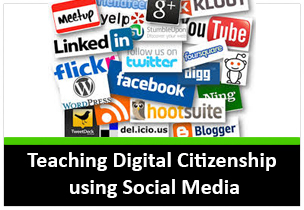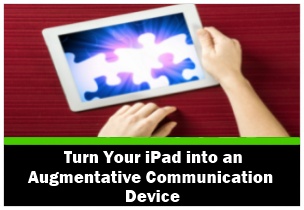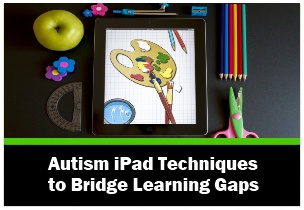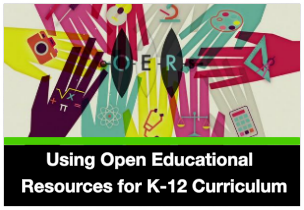Product Description
Instructor: Karina Barley – M.Ed.
Length: 45 Hours
Number of Continuing Education Unit Credits: 3
Online Course
Introduction
Teenagers are among the most prolific users of social media, with some statistics suggesting that up to 95% of teens with access to the Internet are using one or more forms of social media.
Like or loathe it, there is no escaping that social media is intrinsic to the teenage life, so the natural progression is to include the use of social media into your curriculum. Just as we teach students about social values, personal and community safety, and how to prepare for the world outside of school, it’s increasingly vital that we teach students how to use social media positively, respectfully and safely, and to stay connected with our students through the same technology we have incorporated into our daily lives.
This course explores the ‘do’s and don’ts’ of social media, including the negatives and positives of using social media.
You will know how to create a socially connected classroom, how to teach your students to be respectful of each other online, how to teach students to protect their online identity and reputation, help students ward off cyber bullying, and show students how to build an online resume.
After taking this course, you will be better prepared to support your student’s online activities so that they will be protected, safe and prepared. You will learn to be a mentor and role model who fosters positive and appropriate online experiences that sets your students up for future success.
This course aims:
To be aware of the do’s and don’ts of using social media.
To be aware of how to protect yourself and your identity using social media.
To be able to teach students about the pitfalls and lifetime ramifications of using social media.
To be able to teach students about cyberbullying and solutions to avoiding this problem.
To learn about the benefits of using social media like Facebook, Twitter, YouTube, Instagram, Pinterest and LinkedIn, to create a positive social presence.
To learn about the effectiveness of Twitter and its implications for literacy.
To appreciate the academic benefits of using social media.
Session Topics
1. Social media overview.
2. Cyber safety.
3. Sex, sexting and sexual predators.
4. Cyberbullying.
5. How you can be a social media mentor and role model.
6. Using social media as an academic tool
7. 21st century classrooms using social media
8. Zoom, Skype and Google Hangouts.
9. Using social media to create global lessons and connections.
10. Creating a positive social presence.
Methods of Instruction will include:
- Individual lessons.
- Multiple-choice quizzes.
- Assignments.
- Videos.
- Web links.
Text and/or Other Materials
Video, screen captures, multiple-choice quizzes, web links and links to apps are provided by the instructor in this online course. There are NO required textbooks.
Assignments
This course has 5 assignments; 1 assignment for each two lessons. The course includes ten multiple-choice quizzes, with the option to repeat the quiz twice should they fail.
Percentage of Course Credit
Quizzes: 100%
Assignments: Mandatory – and can be letter graded or given a U/US grade.
Assignment Details
1. Social Media Overview
2. Sexting Lesson Plan
3. Being a Social Media Mentor
4. Social Media as Academic Tools
5. The Global Classroom
(See attached Rubrics)
Outline of Course
Lesson One – Social Media Overview
• What is Social Media (SM)?
• What types of social media is out there?
• What are the most popular SM forums available?
• What are the statistics for student use of social media?
• Overview of the positives and negatives.
Lesson Two – Cyber Safety
• How to keep children safe whilst using SM.
• Being social media savvy.
• Know how to secure your privacy and use your security settings.
• Implications of using FB.
• Mind your status.
• Lock your online door.
Lesson Three – Sex, Sexting, and Sexual Predators
• What teachers and students should know about sexting.
• How to help students protect their online image and reputation.
• What are the legal implications of sexting.
• How to teach students about the ramifications of sexting.
• Understanding the dangers of online sexual predators.
• What to teach students about online sexual predators.
Lesson Four – Cyberbullying
• What is cyberbullying?
• What are the statistics on cyberbullying?
• Legal considerations, penalties and free speech.
• Solutions to cyberbullying.
• What can schools do and how cyberbullying affects education?
Lesson Five – How You Can be a Social Media Mentor and Role Model
• Why should we integrate SM?
• Teaching how to use SM safely by being aware of security and privacy settings.
• Integrating social media into your daily classroom activities.
• Using what students are familiar with.
• What is SM etiquette?
Lesson Six – Using Social Media as Academic Tools
• Introduction to Facebook and Twitter.
• FB and Twitter in the classroom.
• Hashtags.
Lesson Seven – 21st Century Classrooms Using Social Media
• Introduction to Instagram and Pinterest.
• YouTube, Vimeo – Using Video channels to share ideas, lessons, learning and for collaboration.
• Using Pinterest to share ideas and demonstrate learning.
• Google+ to collaborate on group projects.
Lesson Eight – Zoom, Skype and Google Hangouts
• Using videoconferencing software.
• Appreciating the differences between Zoom, Skype and Google Hangouts.
• Use Zoom, Skype or Google Hangouts to teach and learn.
• Understanding how videoconferencing works.
Lesson Nine – Using Social Media to Create Global Lessons and Connection
• How to get started.
• Using Skype Classroom to create a global classroom.
• Exploring the different ways that Skype can be used to connect globally.
• Using Zoom and the added record feature.
• The benefits of Google Hangouts.
Lesson Ten – Creating a Positive Social Presence
• Understanding that potential employers are turning to social media to learn more about job candidates.
• LinkedIn – Helping students to create an evolving online CV and portfolio.
• Pinterest – Students can store work, art work, ideas, articles, and blogs. All of this can be referenced so that potential employers can view work your students work and dedication.
• Teaching students to create an online social presence that they can be proud of.
• SlideShare – Use SlideShare to create digital portfolios and store online PowerPoint presentations, which can be referenced for future employment opportunities.








Reviews
There are no reviews yet.